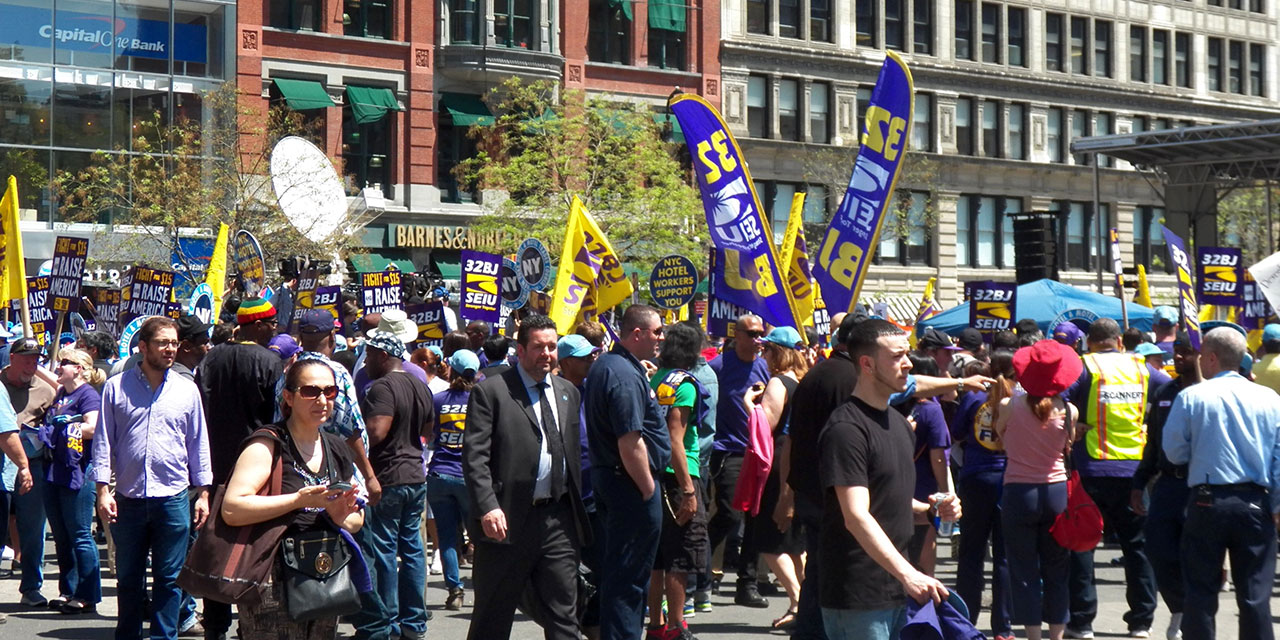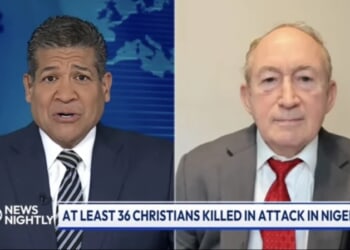
New York City is a “union town.” That’s the phrase labor leaders and their allies in government use to shut down debate whenever the size or performance of the city workforce comes under scrutiny. The next mayor will have to challenge this mindset if he hopes to rein in costs and improve services.
New York City public employees unionized during a period in the late 1950s and 1960s when more than a third of workers in the Empire State held a union card. Outside government, the world changed: union membership in the state’s private sector dipped below 20 percent in the late 1980s and has never rebounded. Only 11 percent of the state’s private-sector workers belonged to a union last year.
Finally, a reason to check your email.
Sign up for our free newsletter today.
By contrast, 95 percent of city government employees are covered by a collective bargaining agreement. The terms and conditions of their employment are governed by one of the city’s 152 union contracts, even though New York State’s civil service law separately protects workers from arbitrary dismissal or discipline.
These contracts dictate how city workers deliver services and thus govern the quality, efficiency, and cost of those services. Over time, they’ve expanded to influence or control most city operations, making government less flexible. For generations, the city’s “union town” reputation has stifled objective evaluation and management of the 327,000 employees scattered across schools and agencies—not counting workers in the public hospital system, public housing authority, and smaller public authorities.
Compared with other cities, New York is an outlier in another key respect. Public employers, including in New York State, typically pay for their employee benefits directly. But since the 1960s, New York City has coordinated its benefits coverage through the Municipal Labor Committee (MLC), a group of public-employee unions (whose proceedings are exempt from the state’s Open Meetings Law). In other words, the city is on the hook to pay for the benefits but doesn’t directly control their administration.
These benefits are increasingly costly and significantly more generous than those of other public employers. For example, the city provides health insurance coverage to employees, retirees, and dependents at no charge to them. That cost more than $8 billion last year—double what it was just a decade before. Most other U.S. public employers, even those in New York State, share the cost of health benefits with workers.
Health coverage for retirees is particularly expensive. Many city employees retire long before they’re eligible for Medicare, meaning the city must foot the bill for their coverage—including their spouse and dependents—for decades. Last year, retiree coverage cost city taxpayers almost $4 billion, an astonishing sum paid for past city services, not present ones. Unlike pensions, where future payments are (in theory, if not always in practice) financed while an employee is on the job, the city funds retiree health coverage almost entirely on a pay-as-you-go basis.
New York State, Connecticut, and New Jersey have shielded taxpayers from some of this cost by shifting Medicare-eligible retirees to less costly, privately administered Medicare Advantage plans. In 2021, the city cut a deal with the MLC to do this. The move was supposed to save $600 million annually, giving the city the cash to pay for raises and other union requests.
But the courts thwarted this plan, partly because city officials negotiated with the MLC rather than winning buy-in from the city council, which could have sanctioned the move. Meantime, MLC member unions, such as the United Federation of Teachers, switched from supporting to opposing the plan. Because the expected savings aren’t materializing, the city must deal with the resulting large financial shortfall.
The next mayor should be prepared to work around the MLC rather than through it. The city’s broad delegation of governmental authority to the MLC is likely constitutionally vulnerable—the organization makes decisions about billions of dollars in public spending but isn’t accountable to the mayor, the council, or any other elected official.
This weakness gives the mayor leverage to push for major changes to employee health coverage. One such negotiated change should be to align employee-contribution levels with those paid by New York State public workers, who chip in at least 12 percent (and up to 27 percent for family coverage). Another should be to start shifting retirees to Medicare Advantage—with or without the MLC’s consent. (The extent to which retiree health coverage can be controlled through collective bargaining is itself legally dubious, since the unions represent active employees, not retirees.) The next mayor, bottom line, should question every premise about the powers the city has surrendered to the MLC and prepare to claw them back.
A similar opportunity exists with the dozens of “welfare funds” operated by unions. This year, the city will transfer $1.3 billion to these organizations to provide dental, vision, and other benefits that the city itself could provide to employees. (The unions profit handsomely from the widespread misconception among workers that they must pay dues to get these city-funded benefits).
Many of these fragmented welfare funds have indefensibly high overhead costs. A 2018 Citizens Budget Commission study found that the funds sometimes spend more than 20 cents of every dollar on administration (larger ones spend well below ten cents per dollar). Some hold far more cash than they would ever need to spend in a year, but since the city’s contribution levels are set by contract, taxpayer money keeps flowing to them anyway. City officials have looked the other way because the funds are a source of patronage jobs (and cash) for the unions.
Instead of allowing the MLC or union welfare funds to act as middlemen, the mayor should use his powers under Chapter 13 of the city charter to procure services directly through competitive sealed bidding rather than collective bargaining. Ending welfare fund contributions and instead using the city’s buying power to provide fringe benefits would immediately generate savings, up to hundreds of millions of dollars by 2029.
Finally, the mayor should press all levels of city government to embrace automation. Using technology to finalize city approvals more quickly and to make city services more responsive would have positive effects throughout the economy. As a large customer, the city government could also nurture the local innovation ecosystem.
Robotic-process automation is one opportunity. For example, in 2020 the city automated part of a small operation that reviews utility bills at city-owned properties, generating about $4 million in savings over two years. City government (including the hospitals and other authorities) employs 27,500 people in clerical or clerical-supervisory roles, down from 32,100 in 2015. The city could continue to leverage automation to realize similarly large efficiency gains as employees leave or retire.
Public-employee unions take the opposite view of automation. They recognize that future hiring, and therefore union dues, will be curbed if the government embraces technology. The next mayor should combat this attitude.
The efficiency of city services is not static—it’s either improving or deteriorating. When the next mayor meets with public-sector unions, he should remember that they’re sitting at a negotiating table, not an altar.
Photo by Mark Apollo/Pacific Press/LightRocket via Getty Images
Source link
















